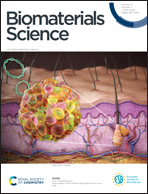Self-assembled nanodrug delivery systems for anti-cancer drugs from traditional Chinese medicine
Abstract
Traditional Chinese medicine (TCM) is a combination of raw herbs and herbal extracts with a plethora of documented beneficial bioactivities, which has unique advantages in anti-tumor therapy, and many of its major bioactive molecules have been identified in recent years due to advances in chemical separation and structural analysis. However, the major chemical classes of plant-derived bioactive compounds frequently possess chemical properties, including poor water solubility, stability, and bioavailability, that limit their therapeutic application. Alternatively, natural small molecules (NSMs) containing these components possess modifiable groups, multiple action sites, hydrophobic side chains, and a rigid skeleton with self-assembly properties that can be exploited to construct self-assembled nanoparticles with therapeutic effects superior to their individual constituents. For instance, the construction of a self-assembled nanodrug delivery system can effectively overcome the strong hydrophobicity and poor in vivo stability of NSMs, thereby greatly improving their bioavailability and enhancing their anti-tumor efficacy. This review summarizes the self-assembly methods, mechanisms, and applications of a variety of NSMs, including terpenoids, flavonoids, alkaloids, polyphenols, and saponins, providing a theoretical basis for the subsequent research on NSMs and the development of SANDDS.

- This article is part of the themed collections: World Cancer Day 2025: Showcasing cancer research across the RSC and Biomaterials Science Recent Review Articles, 2024


 Please wait while we load your content...
Please wait while we load your content...